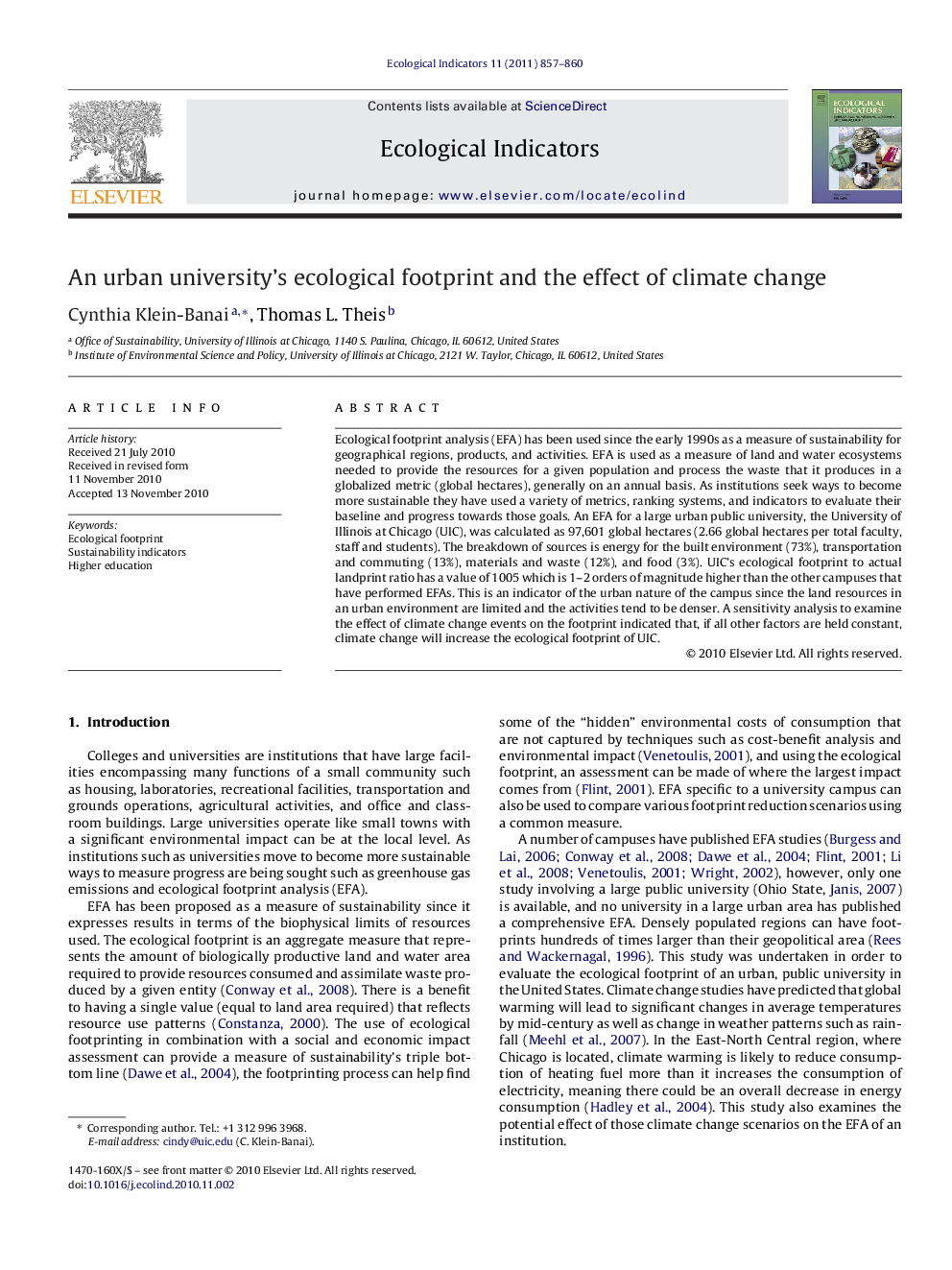| کد مقاله | کد نشریه | سال انتشار | مقاله انگلیسی | نسخه تمام متن |
|---|---|---|---|---|
| 6295686 | 1303158 | 2011 | 4 صفحه PDF | دانلود رایگان |
عنوان انگلیسی مقاله ISI
An urban university's ecological footprint and the effect of climate change
دانلود مقاله + سفارش ترجمه
دانلود مقاله ISI انگلیسی
رایگان برای ایرانیان
کلمات کلیدی
موضوعات مرتبط
علوم زیستی و بیوفناوری
علوم کشاورزی و بیولوژیک
بوم شناسی، تکامل، رفتار و سامانه شناسی
پیش نمایش صفحه اول مقاله

چکیده انگلیسی
Ecological footprint analysis (EFA) has been used since the early 1990s as a measure of sustainability for geographical regions, products, and activities. EFA is used as a measure of land and water ecosystems needed to provide the resources for a given population and process the waste that it produces in a globalized metric (global hectares), generally on an annual basis. As institutions seek ways to become more sustainable they have used a variety of metrics, ranking systems, and indicators to evaluate their baseline and progress towards those goals. An EFA for a large urban public university, the University of Illinois at Chicago (UIC), was calculated as 97,601 global hectares (2.66 global hectares per total faculty, staff and students). The breakdown of sources is energy for the built environment (73%), transportation and commuting (13%), materials and waste (12%), and food (3%). UIC's ecological footprint to actual landprint ratio has a value of 1005 which is 1-2 orders of magnitude higher than the other campuses that have performed EFAs. This is an indicator of the urban nature of the campus since the land resources in an urban environment are limited and the activities tend to be denser. A sensitivity analysis to examine the effect of climate change events on the footprint indicated that, if all other factors are held constant, climate change will increase the ecological footprint of UIC.
ناشر
Database: Elsevier - ScienceDirect (ساینس دایرکت)
Journal: Ecological Indicators - Volume 11, Issue 3, May 2011, Pages 857-860
Journal: Ecological Indicators - Volume 11, Issue 3, May 2011, Pages 857-860
نویسندگان
Cynthia Klein-Banai, Thomas L. Theis,